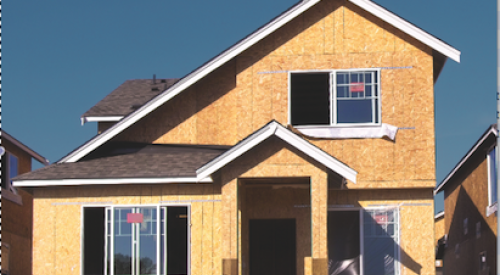Over the past several years, the industry made progress, as a string of court decisions seemed to roll back the tide running against builders since the California Court of Appeal judgment in Kriegler vs. Eichler (1969) broadened strict liability in California to include pro-duction-built housing.
That judgment held that Eichler, as a mass producer of homes, was liable - even if not negligent - for any defect in the manufacture of a product. Thanks to that precedent, California law now treats homes the same as televisions or computers in respect to liability. No other state applies such a standard.
The ruling eventually unleashed a torrent of class-action construction defect lawsuits, filed by lawyers representing home owners associations, against builders, especially those active in attached and condominium development. The entry-level market, where higher densities helped to reduce unit prices, was hard hit.
"There’s a tremendous dislocation of the market that robs entry-level buyers of the opportunity to get into ownership by purchasing an attached unit," says Mick Pattinson, president of Carlsbad, Calif.-based Barratt American Inc., and a leader of the industry’s battles in court and in the state legislature.
But after a string of court victories, in-cluding Zamora vs. Shell Oil (where the U.S. Supreme Court allowed a lower court decision to stand, establishing that plaintiffs must show actual damages, not extrapolations of theoretical harm, to gain a tort award), now comes another set-back.
Twenty-four Yorba Linda, Calif., home owners who claimed their concrete foun-dations were damaged by sulfates in the soil were awarded $1.75 million by an Orange County Superior Court jury. The verdict came after a 15-week trial in front of Superior Court Judge Robert E. Thomas. The award averaged about $73,000 per home.
"What’s most troubling about this new case is that the trial lawyers will try to grab it as another precedent and run with it," says Sherm Harmer, president of Olson Co.-San Diego, a major builder. "It isn’t really precedent-setting, because it’s based on soil conditions, and those vary dramatically from site to site. But anything that encourages the trial lawyers is bad news, and this one has gotten a lot of publicity."
Juan Acosta, the California Building Industry’s legislative advocate in Sacramento, takes a more positive view: "Not only is it not a precedent-setter, it’s not even a victory," he says.
"Take into account that the plaintiffs’ attorneys sought over $250,000 in dam-ages for each of 27 home owners. Now balance that against the costs associated with litigating the case, including at least $700,000 for testimony of expert witnesses.
"Three of the home owners received no award at all, and we estimate the 24 who did receive awards actually got no more than $24,000 each. That’s nowhere near enough to cover the cost of the ex-tensive repairs their lawyers said should be done. All they’ve really done is finance the legal industry.
"They can’t fix the houses for what they got, and thanks to the adverse publicity, they probably will never be able to sell them. About all they can do with their $24,000 is hire another ‘expert’ to say the damage is not structural, which is exactly what the defense argued," says Acosta.
However, Southern California architect Aram Bassenian says the decision is still big trouble: "Every builder, trade con-tractor, and design professional who op-erates in this market was already paying astronomically high rates for liability in-surance. Those rates just went up again. All that’s happened is that the cottage in-dustry associated with construction defect litigation has gotten another boost."









